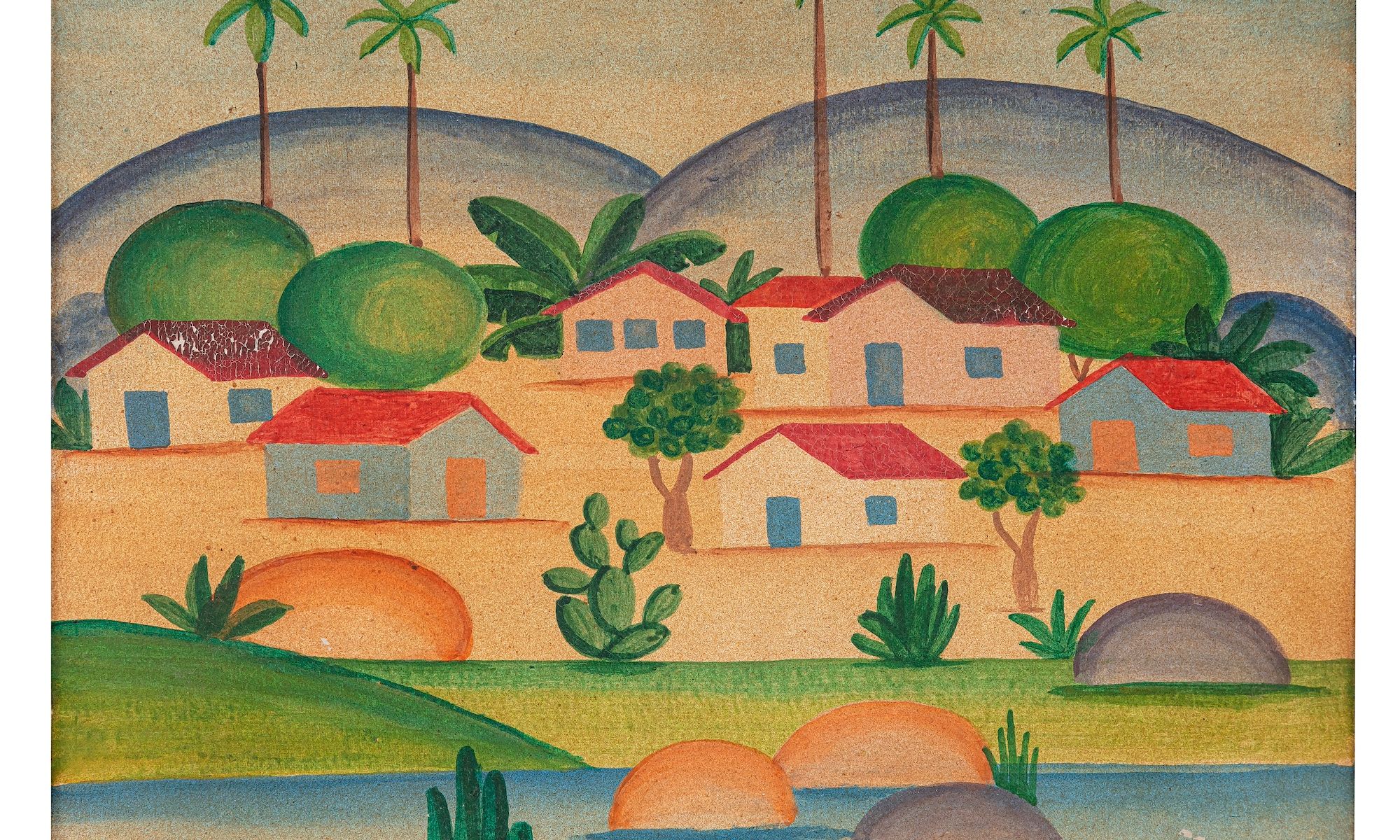Tarsila do Amaral, Paisagem, 1925 Photo by Felipe Berndt, courtesy OMA Galeria and Tarsila SA
More than four months after its authenticity was called into question, a previously unknown work by the celebrated Brazilian artist Tarsila do Amaral (1886-1973) has been deemed genuine. OMA Galeria, which had shown the painting at the fair, and Tarsila SA, the entity that manages the artist’s estate, released the findings of an expert analysis that found in favour of the painting’s attribution to do Amaral.
“I feel very honoured to be part of the process of being able to authenticate a new work by Tarsila do Amaral. She is a legacy to Brazil," Thomaz Pacheco, the owner of OMA, tells The Art Newspaper.
The painting, titled Landscape and dating from 1925, first appeared at this year's SP-Arte fair and was shown to a few experts and a possible buyer. Following media reports of a possible do Amaral discovery, the auctioneer and art expert Douglas Quintale made public comments claiming it was impossible to say whether the work was fake or real just by its appearance or visual examination.
"I'm not comfortable in calling it authentic or fake until further tests are run," he said at the time.
Quintale is the only expert authorized by Tarsila SA to authenticate the artist's works and was responsible for conducting the entire certification process for the new work.
According to Quintale, the authentication process consisted of three parts. The first step was a survey of existing documentation and works both domestically and internationally. Secondly, his team established a database so that they would have means of comparison based on works that had already been certified and catalogued. Lastly, Quintale carried out a series of scientific tests used to authenticate art including scanning, X-rays, paint analysis and more.
"We looked for techniques known to have been used by the artist, the order in which the paints were applied, the type of brushstrokes—everything,” Quintale tells The Art Newspaper. “All these tests were carried out twice, in duplicate.” He adds: "Today, I'm 100% sure it is a Tarsila do Amaral painting."
Tarsila do Amaral's Paisagem (1925) during scientific analysis to determine its authenticity Photo by Douglas Quintale
The painting is said to date from a period when the artist was living in Paris. The owner is a Brazilian Lebanese collector whose father gave the work as a wedding present to his future wife. The work is said to have remained in Brazil until 1976, when the family decided to return to Lebanon after the death of the family matriarch.
According to Pacheco, the painting survived the Israeli and Syrian bombings in the country between 1980 and 1982, despite the house being hit and completely destroyed during those conflicts. It was only in December 2023 that the painting finally returned to Brazil.
Pacheco says he is still negotiating the sale with the same interested party it was shown to at SP-Arte in April. "A deal of this magnitude is not conducted during a three-day negotiation spree or with two WhatsApp messages," he says. "When we started, documentation was already required for the deal to be concluded. Now with the documents in hand, we can take the next steps and conclude this negotiation."
The price for the work, however, seems to have gone up significantly in the last five months. When the painting was shown in April, the gallery was asking 16m reais ($3.2m) for Landscape. Now, with the authenticity confirmed, the painting is being valued at 60m reais ($11m). If sold by the new asking price, it would be Amaral's most expensive painting.
"The whole world is paying attention to the voices of the southern hemisphere and when we talk about Latin America, the biggest voice is Tarsila do Amaral,” Pacheco says. “Museums need some form of this representation within their collection and not all museums have an Amaral in their collection." He adds that, if the current negotiations with the would-be buyer are successful, the painting will soon hang in an institution in the Middle East.
Asked whether there might be other unknown works by do Amaral to identify and authenticate in the future, Pacheco says it is unlikely. “Amaral is an artist who produced very little in her lifetime,” he says. “It is a very scarce production. Being able to reveal a previously unknown work means increasing the reach of the artist's entire production.”
Quintale is less certain. "We have a catalogue of 183 works,” he says, “but for 60 years of production that's very little for an artist like her!"

